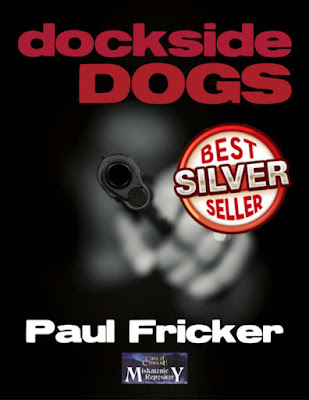The set-up will sound familiar. A gang of besuited, well-dressed criminals arrive at a warehouse having just pulled off an extraordinary crime. Before planning and committing the crime, they had never met before, and even afterwards, they only know each other by their pseudonyms—Mister Black, Mister Red, Mister Green, Mister Purple, Mister Beige, and Mister Silver. The crime has been successfully committed; all they need to do now is follow the boss’ instructions. Lay low in the warehouse until midnight, when he will come for them and ferry them to safety across the bay. It is only a few hours, but not everyone in the gang likes each other and not everyone trusts each other. Perhaps with good reason, because some of them have secrets—and that is before the strange things which seem to be happening in the warehouse. The loot is not what it was when it was stolen—but now it definitely is. Time seems to pass really slowly or really quick. The sound of sirens can be heard right outside the warehouse—but the cops are nowhere to be seen. A baby crying can be heard, but never found in the warehouse. Mister Grey keeps copious notes, but comes and goes. Was he in on the robbery, and if so, should he not be staying in the warehouse like everyone else?If that sounds like the plot of the first film from a nineties wunderkind, then you would not be far wrong.
This is the set-up for Dockside Dogs, a scenario for Call of Cthulhu, Seventh Edition from its co-designer, Paul Fricker. It is a gangster themed, single-session, one-shot scenario which more or less follows the plot of almost any ‘Heist Gone Wrong’ film, from Rififi to Reservoir Dogs—though more the latter than the former. It is set in the nineties, but could just as easily be set in other time periods, and whilst it has obvious American trappings it could be easily adjusted to almost any other big coastal city. As a one-shot, it is designed to be roleplayed by six players and to that end comes with over twelve Investigator sheets so that each of the six gangster Investigators can be played as male or female. There are guidelines for running the scenario with fewer players, but Dockside Dogs is at its best with the full cast of six players and thus six gangsters. Each Investigator sheet includes a personal description, backstory, treasured possessions, and traits for that gangster, as well as a list of what each gangster thinks—and in some cases knows—of his or her fellow crew members.
Dockside Dogs begins with the gangsters arriving at the warehouse in two groups. Exactly what happened earlier in the day will be established through flashbacks and here Dockside Dogs begins to diverge away from what the traditional Call of Cthulhu investigation. The investigation, such as it is, is not through newspaper morgues or in libraries, but into each other. This is spurred on by events which the Keeper slips into the scenario exacerbate the sense of paranoia and uncertainty which pervades the scenario. Another difference between Dockside Dogs and other scenarios for Call of Cthulhu is that it encourages creativity and improvisation upon the part of the players and the Keeper. The effect of these scenes is twofold. First, they strengthen the links between the gangsters, and second, they call back to the film which inspires the scenario and enforces the genre.
Physically, Dockside Dogs is well presented, clearly written, and consequently easy to run with relatively little preparation. The Investigator sheets have all been customised for the scenario and are nicely individualised from one character to the next. Interestingly, there is some foreshadowing on some of the Investigator sheets, which effectively calls for the players of those Investigators to go along with the plot, again to enforce the genre and call back to the scenario’s inspiration.
Just as the genre and film inspiring Dockside Dogs is obvious, so is the Mythos inspiring it. However, just as the scenario asks the players to lean into its genre and filmic inspiration, it is also asking them to lean into the Mythos inspiration as well, though that inspiration is used in a markedly different fashion. With its combination of genre and single-session, one-shot format, Dockside Dogs is reminiscent of the Blood Brothers and Blood Brothers 2 anthologies, but is a more modern, storytelling-influenced version of that format. Dockside Dogs involves ‘blood brothers’ of a different kind in what is a tense and potentially bloody character study.









